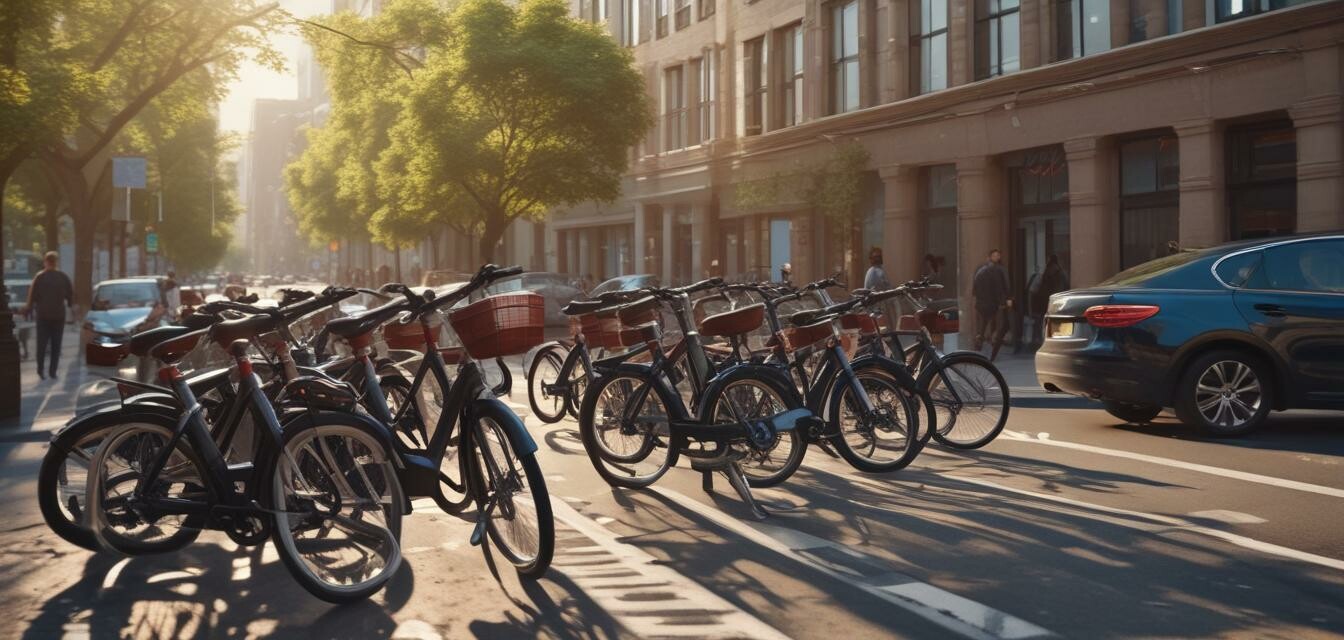
Electric Bike Sales Surge: What It Means for Urban Mobility
Key Takeaways
- Electric bike sales have increased significantly, marking a shift in urban commuting practices.
- This surge has implications for traffic congestion, environmental policies, and city planning.
- Innovative technologies are advancing e-bike capabilities, encouraging wider adoption.
- Policy changes are needed to accommodate and promote safe electric bike use in urban areas.
- As riding an e-bike becomes mainstream, the need for affordable infrastructure becomes evident.
The rise of electric bike sales is not just a trend; it's reshaping urban mobility in unprecedented ways. As more individuals opt for electric bikes over traditional vehicles, cities are beginning to witness a transformation in how people commute, thus impacting traffic patterns, environmental policies, and urban infrastructure.
The surge in electric bike sales
In recent years, electric bike sales have experienced a notable increase. According to industry reports and market research, global electric bike sales surged by over 30% last year alone. This upward trajectory is indicative of a broader shift towards sustainable transport solutions, particularly in urban environments.
Factors contributing to the rise
- Environmental awareness: With increasing concerns about climate change, more individuals are seeking eco-friendly transportation options.
- Government incentives: Many local governments are offering incentives for electric bike purchases to encourage sustainable commuting.
- Technological advancements: Improvements in battery life and e-bike technology are making electric bikes more appealing and reliable.
- Urban congestion: Traffic congestion in urban areas is driving commuters to seek alternatives to traditional vehicles.
Impact on urban mobility
The surge in electric bike usage is poised to have significant implications for urban mobility. Below are some of the key impacts:
| Impact | Description |
|---|---|
| Reduced traffic congestion | As more people utilize electric bikes, fewer cars will occupy roadways, easing traffic flow. |
| Environmentally friendly | Electric bikes produce fewer emissions compared to traditional vehicles, positively impacting urban air quality. |
| Improved public health | More cycling can lead to healthier lifestyles, reducing healthcare costs in the long term. |
| Need for infrastructure | Increased e-bike usage will necessitate the development of dedicated bike lanes and secure parking facilities. |
| Changing commuting behavior | The convenience of electric bikes could lead to a shift in commuting patterns, potentially decreasing public transport reliance. |
What this means for traffic and transport policies
As cities adapt to the influx of electric bikes, there are essential considerations for traffic and transport policies:
Policy adjustments
- Incorporate electric bikes into existing cycling regulations and safety protocols.
- Provide clear guidelines for e-bike operation and usage within city limits.
- Invest in cycling infrastructure to support the increased demand for electric bike facilities.
- Consider outreach programs and incentives aimed at encouraging safe riding behaviors and awareness.
Coordination with urban planning
Urban planners must work alongside policymakers to ensure that electric bike use is integrated into future city designs:
- Design streets that prioritize cyclist safety with dedicated bike lanes.
- Implement traffic calming measures to promote safety for both cyclists and motorists.
- Encourage the placement of bike share programs and e-bike charging stations at key transit locations.
Innovative technology driving change
Developments in technology are also playing a vital role in the electric bike industry's growth. Key innovations include:
| Technology | Description |
|---|---|
| Battery advancements | Longer-lasting batteries are enabling longer rides and reducing charging time. |
| Smart features | Integration of GPS, anti-theft systems, and app connectivity enhances user experience and security. |
| Lightweight materials | Modern designs use carbon fiber and aluminum to reduce weight and improve portability. |
Conclusion
The surge in electric bike sales indicates a significant shift in urban mobility, potentially reshaping commutes, environmental footprints, and traffic policies. Policymakers, city planners, and manufacturers must work together to harness this momentum and create a sustainable, bike-friendly urban environment.
Tips for urban cyclists
- Always wear a helmet to ensure your safety.
- Stay updated on local laws regarding electric bike operation.
- Utilize bike lanes whenever possible.
- Consider investing in quality locks to secure your e-bike.
- Maintain your bike regularly for optimal performance.
Pros
- Convenient and efficient for urban commuting.
- Environmentally friendly option compared to cars.
- Promotes active lifestyle and healthier habits.
- Reduces traffic congestion in busy areas.
- Provides flexibility in commuting hours and routes.
Cons
- Initial cost may be higher than traditional bikes.
- Battery maintenance can be an extra hassle.
- Limited range depending on battery capacity.
- Weather can impact comfort during rides.
- Potential for theft if not secured properly.